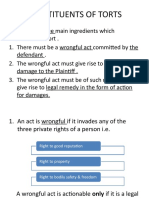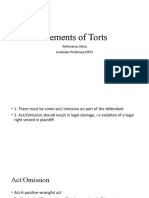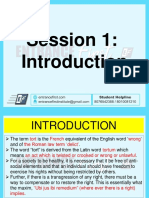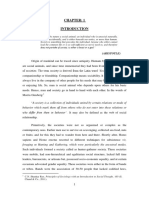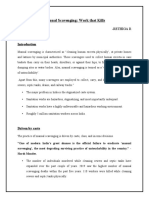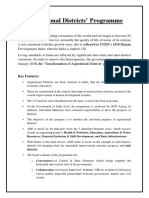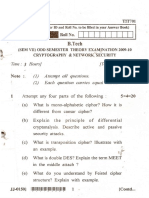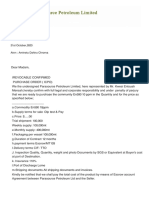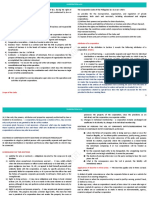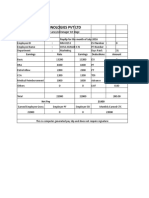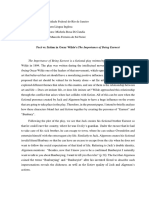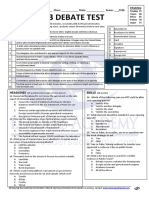0% found this document useful (0 votes)
42 views5 pagesFaculty of Juridical Sciences COURSE: B.B.A.LL.B. I ST Semester Subject: Law of Torts Subject Code: BBL 106
The document summarizes key concepts in tort law, including legal damage, damnum sine injuria, and injuria sine damno. It provides examples of each through leading cases:
- Damnum sine injuria refers to actual loss without legal injury, such as economic loss that does not violate legal rights. The leading case is Gloucester Grammar School from 1410.
- Injuria sine damno refers to legal injury without actual loss, such as infringement of private rights that is actionable even without proven damages. The leading case is Ashby v. White from 1703.
- It concludes with review questions related to malicious prosecution, duty of care in tort law, and principles from key cases like Rylands
Uploaded by
Yash SinghCopyright
© © All Rights Reserved
We take content rights seriously. If you suspect this is your content, claim it here.
Available Formats
Download as PDF, TXT or read online on Scribd
0% found this document useful (0 votes)
42 views5 pagesFaculty of Juridical Sciences COURSE: B.B.A.LL.B. I ST Semester Subject: Law of Torts Subject Code: BBL 106
The document summarizes key concepts in tort law, including legal damage, damnum sine injuria, and injuria sine damno. It provides examples of each through leading cases:
- Damnum sine injuria refers to actual loss without legal injury, such as economic loss that does not violate legal rights. The leading case is Gloucester Grammar School from 1410.
- Injuria sine damno refers to legal injury without actual loss, such as infringement of private rights that is actionable even without proven damages. The leading case is Ashby v. White from 1703.
- It concludes with review questions related to malicious prosecution, duty of care in tort law, and principles from key cases like Rylands
Uploaded by
Yash SinghCopyright
© © All Rights Reserved
We take content rights seriously. If you suspect this is your content, claim it here.
Available Formats
Download as PDF, TXT or read online on Scribd
/ 5





























